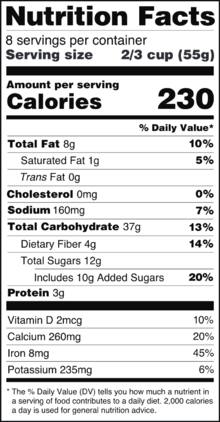You don’t have to have diabetes in order to know that sugar has been made the villain of all foods. But the truth is, sugar isn’t that evil. Nor is it the root cause of all prediabetes and diabetes. For starters, it can help someone recover from hypoglycemia (low blood sugar). Yet, that doesn’t mean we shouldn’t be more mindful about added sugars. Here’s your guide to added sugars with type 2 diabetes.
What is glucose?
Without going too deep into biochemistry, let’s talk about glucose (AKA blood sugar). It’s the simplest form of the carbohydrates. The simple structure makes it an easy energy source. When we eat, our body tells the pancreas that it needs to release insulin to process glucose. The liver also helps store glucose for a later time and can help make extra glucose when the body is low.
When you have type 2 diabetes, the pancreas doesn’t produce insulin the way it should. Or the liver doesn’t recognize insulin that’s already in the body and continues to make glucose.
We end up with high amounts of blood sugar when the pancreas isn’t producing insulin with the liver still making glucose. And that’s when eating too much added sugars becomes an issue.
What are added sugars?
Added sugars are the ingredients added to foods or beverages when they are made. Naturally occurring sugars such as those in fruit or milk are not considered added sugars.
Manufacturers add sugar to 74% of packaged foods sold in US supermarkets. Plus, The Sugar Project identified over 250 names for sugar used in our processed foods and beverages. Even as a dietitian, I can’t commit all those to memory but these tips will help you spot added sugars on a food label:
Added Sugars on Ingredients List
- Words ending in “ose” (like fructose or dextrose)
- Syrups (high-fructose corn syrup, maple syrup, brown rice syrup, agave syrup)
- Nectars (agave nectar, date nectar)
- Juices (fruit juice, cane juice)
- Malts (barley malt, malt extract)
- Sweeteners (evaporated sweetener)
- Honey
The New Food Label
You may have already started to see new food labels with a line saying “Added Sugars”. By January 1, 2020, the goal is to have companies with more than $10 million in revenue list the added sugars amount under the Total Sugars line. Products from smaller companies have until January 1, 2021 to comply. This means that it will be slightly easier for you to identify how many added sugars are in your foods.

The stats on added sugars
One of the reasons sugar has become a hot topic is because we now have more insight into how much sugar we’re eating. The average American eats about 70 grams of added sugar per day.
Since we get glucose from natural foods, like fruits and vegetables, there’s no hard guidelines on how much added sugar someone needs. The American Heart Association recommends 36 grams for men and 24 grams for women. Which, is in line with the World Health Organization who recommends limiting added sugars to less than 10% of total energy intake.
3 ways to cut back on added sugars
Despite popular diet trends and added sugars’ bad rep, you don’t have to cut out the sweet stuff entirely. Instead, be more mindful and strategic about what you are eating.
Keep a temporary food log
Likely, the recommendation to eat less than 36 grams of sugar doesn’t mean much to you, yet. The best place to figure out what 36 grams looks like for you is to use an app to track what you eat. We recommend an app because that will show you how much added sugars are in your food choices.
*Current BlueStar users: Our food features make it easy to get the nutrition information.
Swap out brands
The next time you go to the grocery store, give yourself a little extra time. Then, spend time looking at your favorite foods and compare brands. For example, added sugars in yogurts vary from brand to brand. Swapping for a different brand could make a big difference. Sauces, peanut butter, and breads are other foods that can vary a lot from brand to brand.
Avoid skipping meals
When you skip a meal, your blood sugar goes down and your body can go into “survival mode”. We’ve all been there. It feels like you could eat anything. Instead of skipping meals, eat regularly throughout the day. Then, you’ll feel satisfied and are less likely to crave extra sweets.
Summary
Having diabetes doesn’t mean you can’t enjoy your favorite sweet food now and then. Instead, it’s about being mindful of where added sugars sneak into our food and how it affects the body. It’s about knowing how to make small changes that lead to a healthier life.




